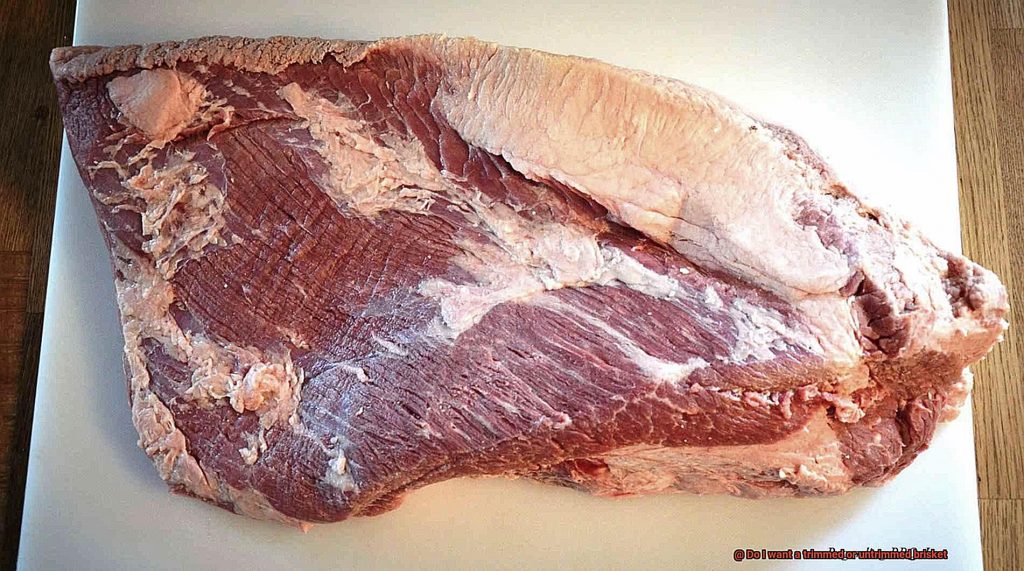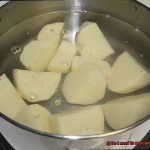Are you planning a mouth-watering brisket feast? The kind that will make your guests swoon and beg for seconds? Then, you’re probably wondering whether to go trimmed or untrimmed. It’s a tough choice. An untrimmed brisket looks impressive with its thick layer of fat, but it can be a turn-off for some diners. Meanwhile, a trimmed brisket has less fat, but it can also dry out faster. So which one should you choose?
That’s where we come in. In this blog post, we’ll explore the pros and cons of both trimmed and untrimmed brisket cuts. We’ll take a closer look at the differences between these two options and help you decide which one is best for your needs. Whether you’re an experienced pitmaster or just starting out on your BBQ journey, we’ve got you covered.
But before we dive into the nitty-gritty details, let’s start with some fun facts about brisket. Did you know that this cut comes from the cow’s chest and is made up of two muscles—the leaner flat and the fattier point? And did you know that it’s one of the toughest cuts of beef? To make it tender and juicy, brisket needs to be slow-cooked for several hours. And how it’s trimmed can make all the difference in its texture and flavor.
So get ready to learn everything there is to know about the trimmed vs. untrimmed brisket debate. We promise by the end of this post; you’ll be able to choose the perfect cut for your next BBQ party.
Contents
The Difference Between Trimmed and Untrimmed Briskets
Brisket is a tantalizing cut of meat that can be prepared in numerous ways. Whether you’re considering smoking it low and slow or grilling it quickly over high heat, choosing the right cut is critical. In this article, we’ll delve into the distinctions between trimmed and untrimmed briskets to help you determine which option is ideal for your next cookout.
First things first, what distinguishes a trimmed brisket from an untrimmed one? A trimmed brisket has undergone a process that removes some of the excess fat and silver skin, whereas an untrimmed brisket has not. The fat layer on top of an untrimmed brisket is referred to as the fat cap, and it can add flavor and moisture to the meat when cooking.
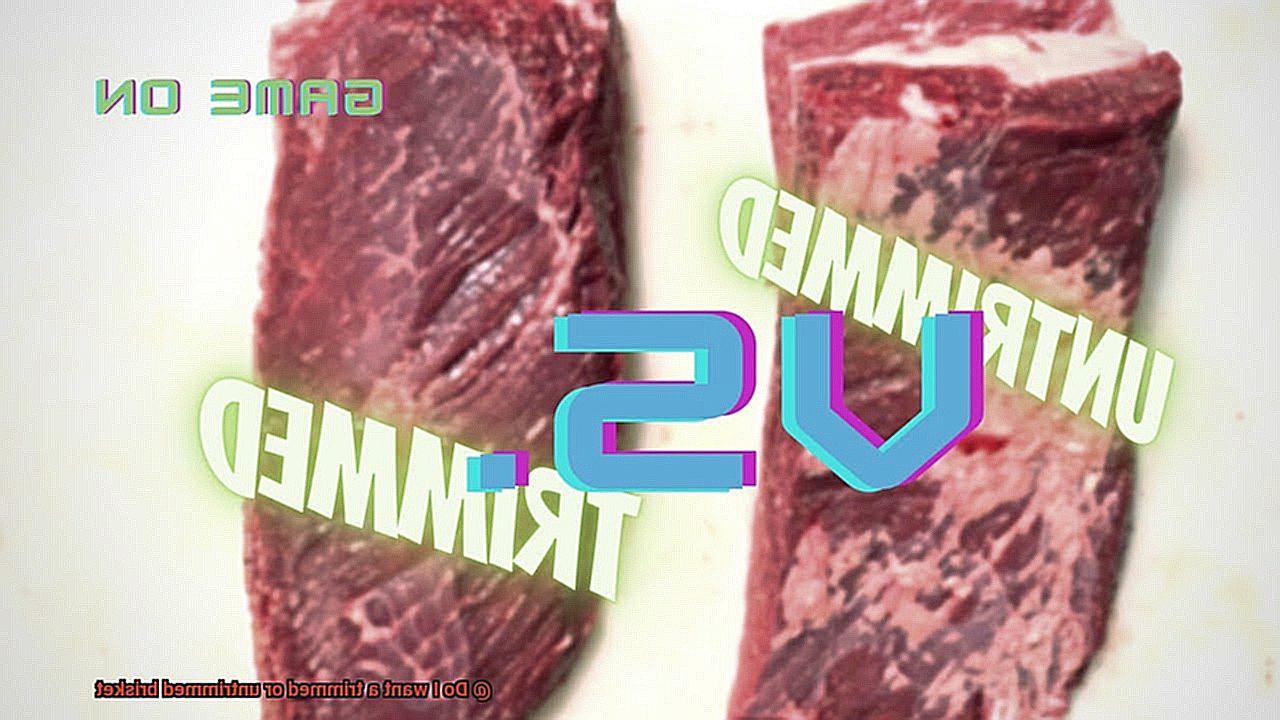
Suppose you’re planning to smoke your brisket slowly over several hours. In that case, an untrimmed cut may be the best option as the fat will gradually render down, enhancing the meat’s flavor and moistness. However, if you’re grilling your brisket rapidly over high heat, a trimmed cut may be more manageable and cook more evenly.
Trimming a brisket can assist in even cooking and reduce the amount of fat in the final product. However, some people claim that the fat is necessary for flavor and moisture, preferring the untrimmed option. Ultimately it comes down to personal preference and cooking style.
Untrimmed briskets are typically larger and have more fat, requiring longer cooking times. This can be a challenge for novice meat smokers. In contrast, trimmed briskets are simpler to handle and cook more quickly, making them an excellent option for those who desire a delectable meal without having to tend to their smoker for hours.
Factors to Consider When Choosing Between Trimmed and Untrimmed Briskets
The decision may seem daunting, but fear not. By considering the following factors, you can make an informed decision that will satisfy your taste buds and cooking needs.
Firstly, let’s discuss personal preference. If you prefer meat with less fat, then a trimmed brisket is your best option. On the other hand, if you’re a fan of juicy and flavorful meat, then an untrimmed brisket may be more up your alley. Remember to trust your taste buds when making this decision.
Next up is cooking method. If you plan on slow cooking your brisket using methods like smoking, then an untrimmed brisket is the way to go. The natural fat content will keep the meat moist and tender throughout the long cooking process. However, if you’re looking for a faster cooking method like grilling or broiling, then a trimmed brisket may be better suited for you.
Size matters too. Keep in mind that untrimmed briskets are generally larger and heavier than trimmed ones. If you have limited space or equipment, then it may be best to opt for a trimmed brisket.
Last but not least, we have cost. Untrimmed briskets are typically less expensive than trimmed ones because they require less processing from the butcher. However, they may require additional preparation time and effort on your part to trim excess fat and other unwanted parts before cooking.
Pros and Cons of Trimmed Briskets
In this post, we’ll explore the pros and cons of choosing a trimmed brisket to help you make an informed decision.
Firstly, let’s focus on the benefits of choosing a trimmed brisket. One of the biggest advantages is that it’s easier to handle and cook. With most of the excess fat and connective tissue removed, it saves time and hassle – perfect for newbies to grilling or those who want a quick meal.
Moreover, trimmed briskets tend to have a more consistent texture and flavor. Without the excess fat, the meat cooks evenly, resulting in a uniform texture. Also, the beefy flavor is cleaner compared to untrimmed briskets.
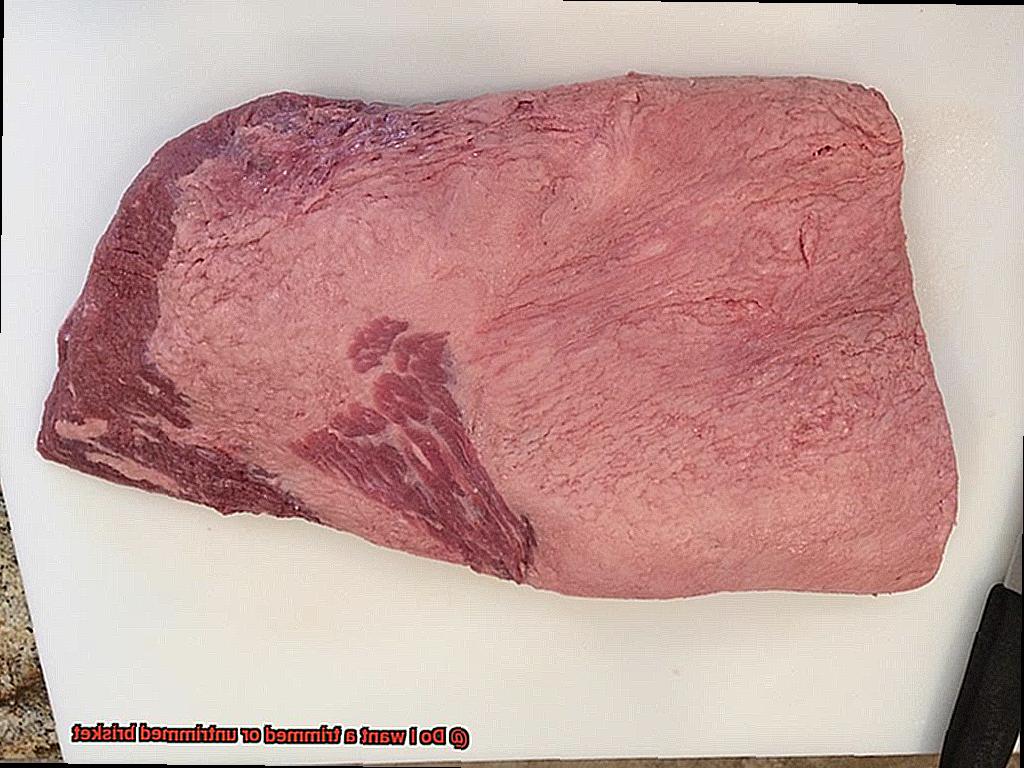
However, there are some potential downsides to choosing a trimmed brisket. One concern is that without the excess fat, the meat might become dry and tough if overcooked. Thus, this option isn’t ideal for inexperienced grillers.
Another potential issue with trimmed briskets is that they may be more expensive than untrimmed ones due to extra labor and time required for trimming.
So, what’s the verdict? Ultimately, choosing between a trimmed or untrimmed brisket depends on your personal preferences and cooking experience. If you want a quick and easy meal with a consistent texture and flavor, go for trimmed brisket. But if you’re willing to put in extra effort for juicy meat with more flavor, then an untrimmed one might be worth considering.
Pros and Cons of Untrimmed Briskets
When it comes to brisket, there’s a never-ending debate between trimmed and untrimmed options. While both have their benefits, let’s dive into the pros and cons of cooking an untrimmed brisket.
One of the most significant advantages of an untrimmed brisket is the added flavor and moisture that comes from the layer of fat. The fat renders down during cooking, basting the meat and adding juiciness and richness. This can result in a more tender and flavorful end product that some people swear by.
However, untrimmed briskets also come with a few potential downsides. One issue is that trimming off the excess fat after cooking can be challenging, making it difficult to get a clean slice. Additionally, if the fat isn’t cooked correctly, it can become chewy and tough, which can ruin the texture of the meat.
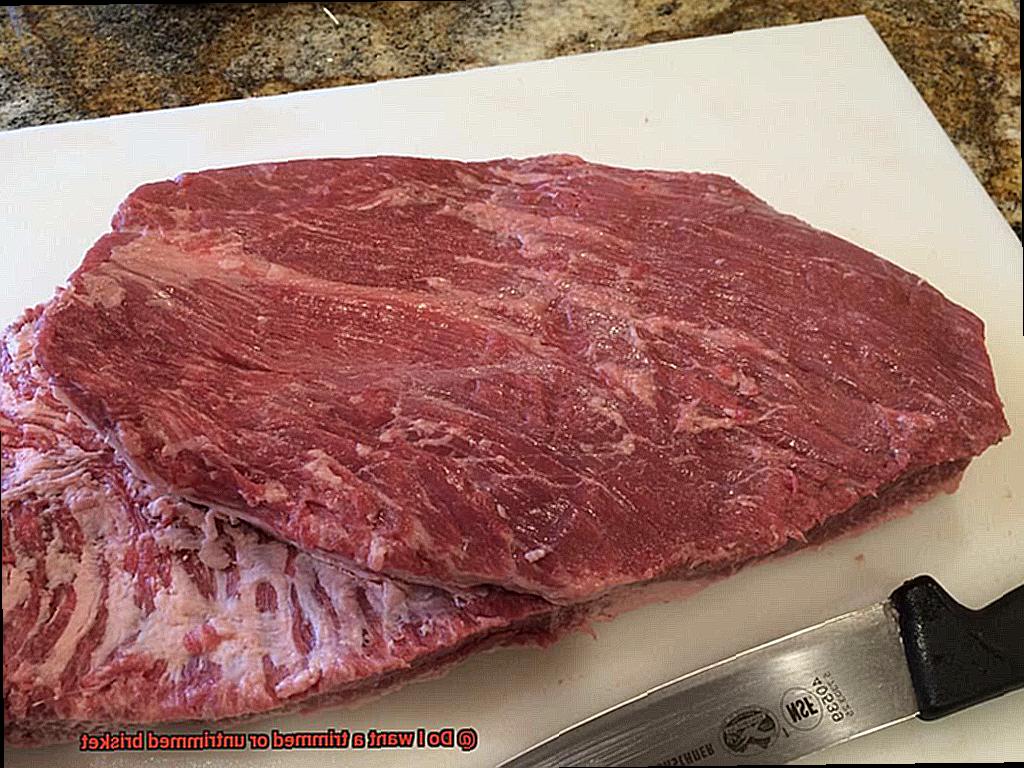
Another thing to consider is that untrimmed briskets take longer to cook than their trimmed counterparts. This is because the extra layer of fat needs to render down before the meat can cook evenly. While some people see this as an advantage because it allows for a longer cooking time and can result in a more tender end product, others may view it as a downside because it requires more time and effort.
But don’t let these potential drawbacks discourage you from trying out an untrimmed brisket. With a little extra effort, you could end up with a mouth-watering meal that’s worth the time investment. And if you’re willing to put in the work, here are a few tips to help you get the most out of your untrimmed brisket:
- Use a sharp knife to trim off any excess fat before cooking.
- Cook your brisket at a lower temperature for a longer period to allow the fat to render down slowly.
- Wrap your brisket in foil or butcher paper during cooking to help retain moisture.
- Let your brisket rest for at least 30 minutes before slicing to allow the juices to redistribute and prevent a dry end product.
Tips for Cooking the Perfect Brisket, Regardless of Cut
Cooking the perfect brisket can be a daunting task, but with a few key tips, you can achieve a tender, juicy, and flavorful final product. Whether you choose a trimmed or untrimmed cut, these tips will help you elevate your brisket game to the next level.
Choosing the Right Cut
The first step in cooking the perfect brisket is choosing the right cut. While both the point and flat cuts can be delicious when cooked properly, they have different qualities that may appeal to different tastes. The flat is leaner and easier to handle, while the point has more fat and is more flavorful. Ultimately, the decision should be based on personal preference.
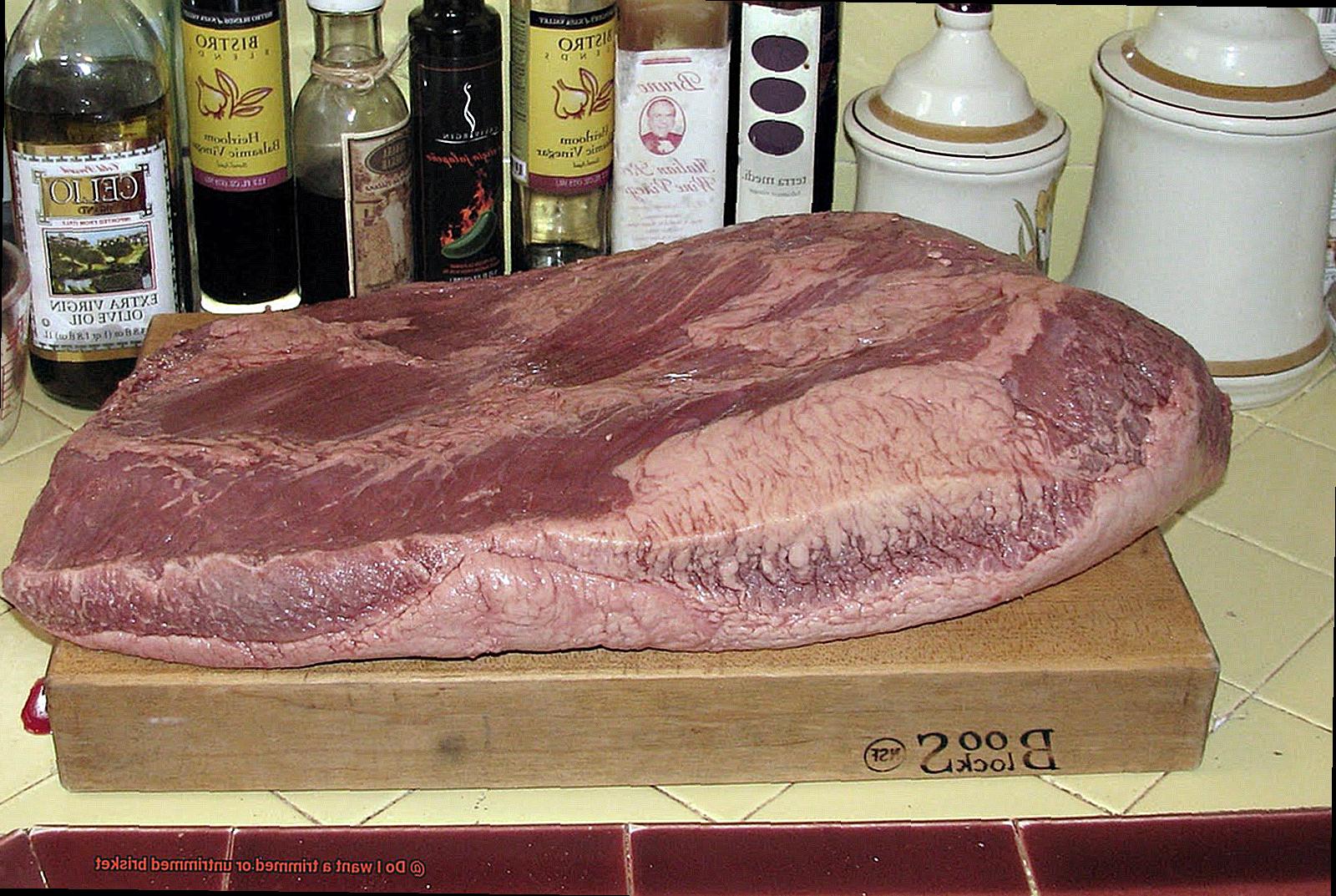
Preparing Your Meat Properly
Proper preparation is key to cooking a delicious brisket. This means trimming any excess fat or silver skin and seasoning your meat with a seasoning rub or marinade of your choice. Allowing your meat to come to room temperature before cooking can also help ensure even cooking throughout.
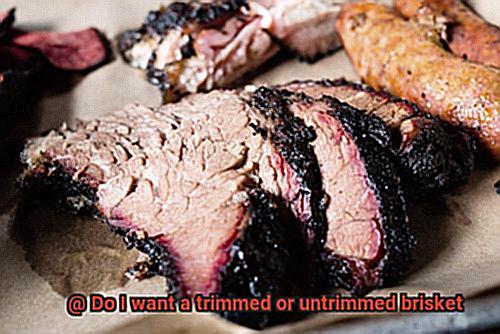
Monitoring Internal Temperature
Cooking your brisket low and slow is essential for achieving tender, juicy meat. Using a smoker or grill can add extra flavor and infuse it into your meat. Monitoring internal temperature regularly using a meat thermometer will help ensure that your brisket is cooked properly and reaches the desired level of doneness.
Allowing Your Brisket to Rest
After your brisket is cooked, it’s important to let it rest before serving. This allows the juices to redistribute throughout the meat, resulting in a more tender and flavorful final product. Plan on allowing your brisket to rest for at least 20-30 minutes before slicing and serving.
Experimenting with Different Techniques
Don’t be afraid to experiment with different techniques and seasonings until you find what works best for you. Whether you prefer smoking your brisket low and slow or grilling it quickly over high heat, there are many ways to cook a delicious brisket. The key is to find what works best for your taste preferences and cooking style.
What Do the Experts Say About Trimmed vs Untrimmed Briskets?
Let’s start with the basics. An untrimmed brisket comes with a thick layer of fat on top, known as the “fat cap.” This layer of fat is essential for keeping the meat moist during the long cooking process. In contrast, a trimmed brisket has less fat and can be easier to handle during cooking.
Many pitmasters and barbecue enthusiasts argue that an untrimmed brisket is the way to go. The fat cap not only helps keep the meat moist, but it also infuses flavor as it renders down. However, others prefer a trimmed brisket for its ease of use and control over the final product.
But that’s not all. The decision between trimmed or untrimmed also depends on your personal preference and cooking style. If you’re after maximum flavor and tenderness, then an untrimmed brisket may be your best bet. However, if you prefer more control over the final product and an easier cooking process, then a trimmed brisket might be more suitable.
It’s worth noting that if you do opt for an untrimmed brisket, it’s crucial to properly trim any excess fat or connective tissue before serving. This ensures that you’re left with a juicy and flavorful piece of meat.
Wb-vT7JhlPc” >
Conclusion
In conclusion, the decision to opt for a trimmed or untrimmed brisket is a matter of personal preference, cooking style, and desired outcome. An untrimmed brisket boasts a thick layer of fat that imparts flavor and moisture to the meat during slow cooking methods like smoking. However, it requires more time on the grill and can be daunting for those new to smoking meats. A trimmed brisket, conversely, is easier to manage and cook but may dry out faster if overcooked.
When making your choice between cuts, take into account factors such as your preference for fat content, cooking method, size, and cost. Regardless of which cut you select, it’s crucial to prepare it correctly and monitor its internal temperature carefully to achieve tender and juicy meat. Allowing the brisket to rest before serving ensures that the juices are evenly distributed throughout the meat.
Ultimately, there’s no right or wrong answer when deciding between a trimmed or untrimmed brisket. It all comes down to what you prefer in terms of taste and texture.

